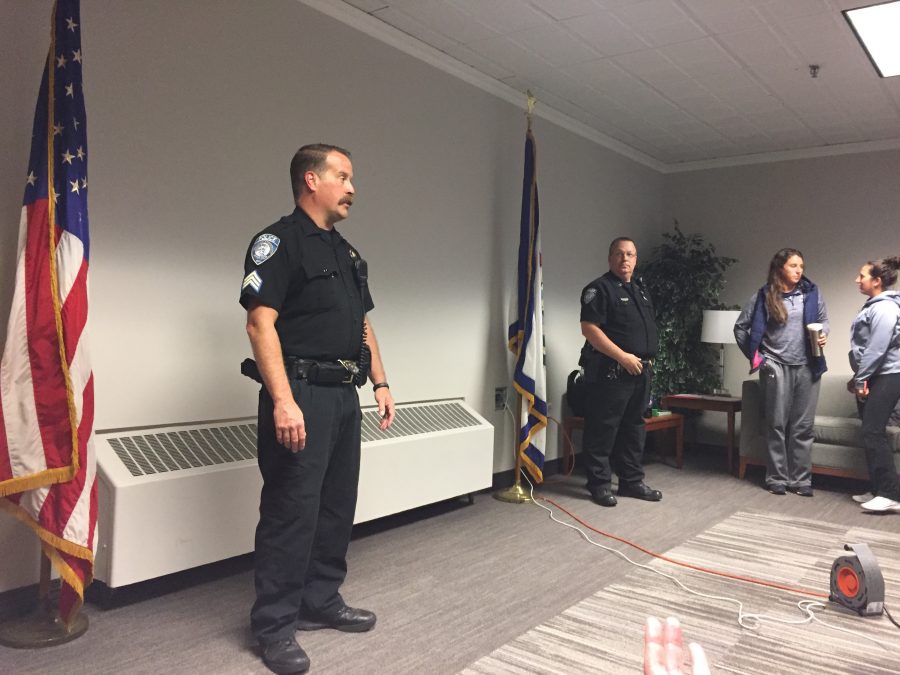Defensive behavior during an active shooter situation was discussed Thursday, Oct. 27, during a session conducted by University police.
Staff and faculty, which filled the Cumberland Room of the Student Center, were told by two members of the University police that there are four ways to react in an active shooter situation: escaping, locking down, fighting, and doing nothing.
Sergeant David Kelvington stressed that doing nothing is never the correct path of action in an active shooter situation. Anything that a person can do to disrupt the plan of a shooter, if escape or finding a safe hiding place is not possible, will save lives, Kelvington said. Acting quickly is a must in such a situation as the average active shooter event lasts between three to seven minutes, said Officer Robert James.
At the beginning of the training, Kelvington and James said that this type of preparation was important to the safety of the university and that at some point in the future they hope to make the training mandatory for faculty and staff at Shepherd.
James noted that active shooter situations are not new and indeed date as far back as frontier times, but that raising awareness was a key aspect in preventing future attacks. Kelvington said “The last thing we want to do is make people paranoid” but being prepared and having a plan is imperative to campus security.
Some of the major school shootings of the past, including Columbine and Sandy Hook were discussed. Kelvington said, “we are students of history” and should learn from past events to create safer school environments. He said that the 1999 shooting in Columbine High School that caused 15 deaths was an example of the danger of lack of training because the victims froze from the shock of the event. Kelvington used the principal of Sandy Hook Elementary School at the time of the 2012 shooting that claimed 27 lives as an example of self sacrifice in an effort to hinder the ability of the shooter to carry out his or her plan. He said that even though the principal lost her life, her struggle with the shooter slowed him down and saved some lives. School shootings have continued since Sandy Hook, including one at the Marysville Pilchuck High School in 2014 in Washington State which claimed five lives.
After the opening remarks of the officers, a video from the Center for Personal Protection and Safety was shown. According to the video, one should attempt to locate a quick and safe escape route or an area such as a closet with a locking door. Staying calm, understanding what is happening around you, and providing police with as much information as possible are necessary actions to ensuring your and others’ safety according to the video.
The officers made it clear that they are constantly working to make themselves better prepared to handle these events. They have trained other groups off campus in the past and are aware of the always evolving procedures that law enforcement agencies devise to prevent and best handle active shooter situations, said Kelvington.
An audience member asked the officers how to discern loud noises that do not pose a threat from the sound of gunfire.
“We have to leave the decision to call up to your individual discretion, but we would rather respond to 100 false alarms than to not get the one call that makes the difference in saving lives,” Kelvington said.
Kelvington said that they plan to offer more active shooter trainings for faculty, staff, and students in the coming months.
The Picket has a link at the top of its home page with emergency preparedness information, including a video on surviving an active shooter situation. https://supicket.com/emergency-preparedness/

